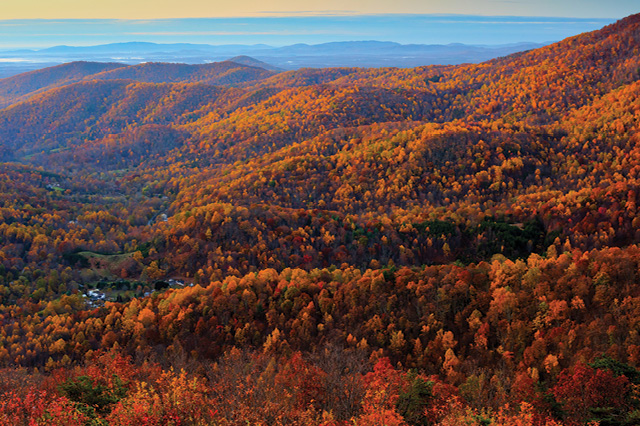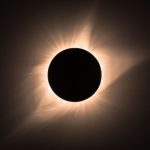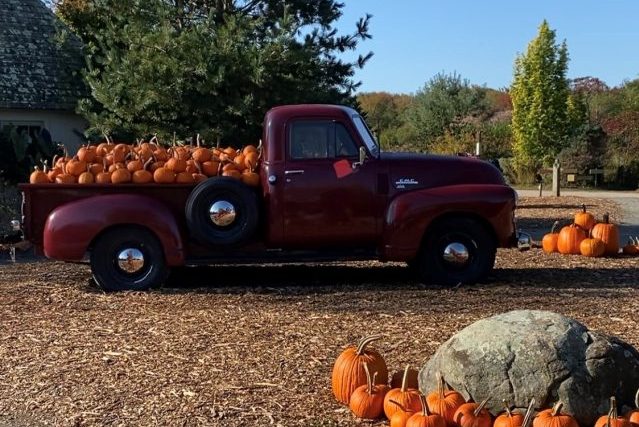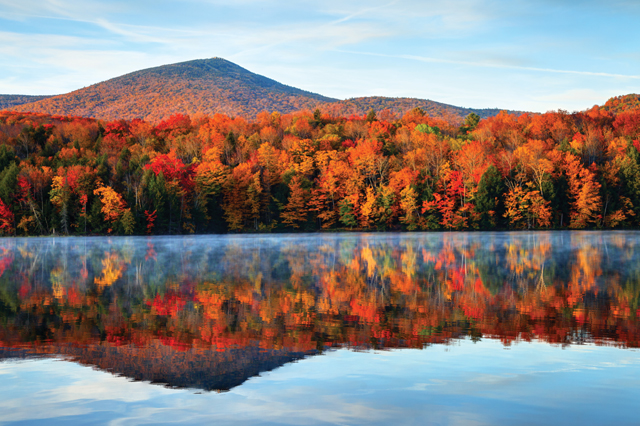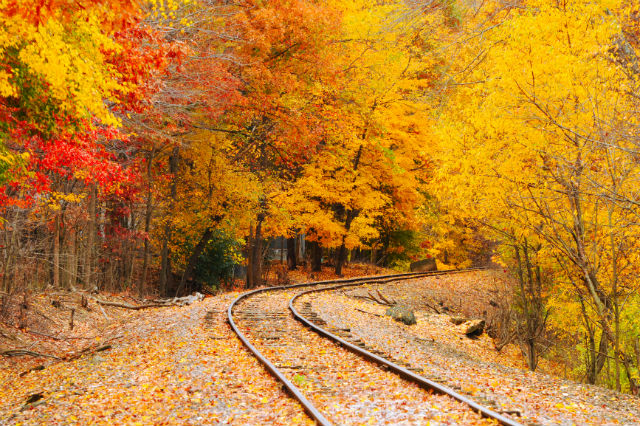Though the end of summer is a sad thought for some, for others it means saying hello to their absolute favorite season. With the rise of pumpkin spice-flavored treats, the smell of firewood in the air and the Halloween movie marathons being played on TV, fall is a time for change – in more ways than one.
In fall, leaves go through a spectacular transformation. By the end of the month, the bright forest greens will begin to be replaced with deep reds, neon oranges, golden yellows and any combination of the three. As residents of the Northeast region of the U.S. – one of the few regions of the world that is home to color-changing foliage – we are treated to beautiful views, whether for camping, sightseeing or just enjoying the fresh air in our backyards.
How are we so lucky to see this natural phenomenon and why does it happen? To find this out and more, we talked to Patressa Kearns, visitor services park ranger and weekly fall color report writer at Shenandoah National Park in Virginia.
Q: Take us back to science class. Can you explain why and how leaves change color in the fall?
A: We used to distribute a really cool info brochure about the science of fall color. I’m going to quote from it a bit: “During spring and summer, the cells of the leaves produced food so the trees can grow. These cells contain the pigment chlorophyll, which gives leaves their green color and helps produce simple sugars to nourish the tree. Leaves also contain yellow pigments called carotenoids. Most of the year these shades of yellow are masked by the green chlorophyll. Changes in day length along with cooler temperatures trigger the leaves to stop making food. As chlorophyll breaks down, the dominant green colors fade and yellowish colors emerge.”
Q: What conditions are necessary for leaves to change color?
A: Warm, sunny days followed by cool nights (below 45 degrees Fahrenheit) produce the best fall color.
Q: What are all of the possible colors that leaves can turn? What colors do maples typically turn, oaks, etc.?
A: Oak trees tend to turn later and tend to be deep, rich shades, as opposed to the brighter, more neon shades of maples. Oaks are usually pumpkin orange, dark gold, sometimes paprika orange and wine red. Maples tend to be the more neon colors – bright orange-red and a few bright yellows. Hickories are a gorgeous gold, like flames! Ash trees are something else. They tend to be more bronze-y, but there can be bronze, deep gold and green all on one tree, so that a tree might look like a dying ember. Vines are colorful, too. Virginia creeper vines turn a deep, bright red. Bushes like sumac and sassafras are Jamaican red and gold. Sassafras can look like mangoes sometimes – bright green, pinky red and tropical gold. Dogwoods turn beautiful bronze-y wine colors.
Q: Which of those is your favorite?
A: I really like the ashes because they’re so mysterious. Everybody’s ashes here in the East are in trouble, though, from the emerald ash borer.
Q: What are some other trees from other parts of the country that produce cool colors in the fall?
A: Birches turn a beautiful yellow in the fall. There are almost none here in Shenandoah, but they are abundant out west.
Q: How long do we typically get to see colorful leaves before they die? When is fall color at its peak?
A: Speaking very generally, fall color lasts anywhere from a month to six weeks, usually closer to a month. In Shenandoah National Park, fall color begins toward the end of September and lasts through the end of October, with the best time usually falling around the middle of the month. Fall color tends to arrive a week or two earlier in the northeast than it does here and southward. So, my guess is that peak fall color tends to happen in early October in New England, New York, and Pennsylvania.

Q: Last year, some of us in New England felt as if fall came and went faster than usual. Part of that is due to the short amount of time the fall colors lasted. Why might have that been the case?
A: A lot of conditions can bring about shorter or longer fall color seasons. Sometimes we’ll get a spell of warm or even hot weather during the day in late September or in October, which slows down and dulls color. Sometimes rainy, windy weather can just plain knock the leaves off the trees before they get to their best color. Last year here in Shenandoah was not our brightest fall color, that’s for sure. It was pretty, but it never achieved the brilliance of other years. And in 2013, Shenandoah had a really long fall color period – on into mid-November!
Q: Have you ever taken a scenic drive or hike through some beautiful fall foliage?
A: Yes, in Connecticut. One fall, years ago, we visited the Denis Curtiss sculpture gardens in fall and the whole drive was lovely.
Q: Best state in the U.S. for fall foliage?
A: I don’t know for sure, but I think most people would argue for Vermont. I would argue, of course, for Virginia. Virginia has it all!
Q: What other national parks or state parks do you know of that also boast beautiful fall foliage?
A: If you’re talking about the eastern U.S., I’d say Shenandoah, of course, along with Acadia National Park in Maine; the Blue Ridge Parkway, which runs through Virginia and North Carolina; Valley Forge National Historical Park in Pennsylvania; and the Great Smoky Mountains National Park in North Carolina and Tennessee.
Q: Last, but not least, know any good tree jokes?
A: No, but if you do, I’d love to hear them because I’m a sap for tree jokes!
Over the centuries, there have been myths and legends to explain the phenomenon of leaves changing color, such as the Native American legend that celestial hunters slew a bear in the fall and its blood colored the leaves red, starting an annual change in color. Another Native American legend tells the tale of a fight between a Bear and Deer, ending in the same result.
No matter what you believe, the views this year are sure to be dazzling, as they are every year.
This story was originally published in 2017 and has been updated.




